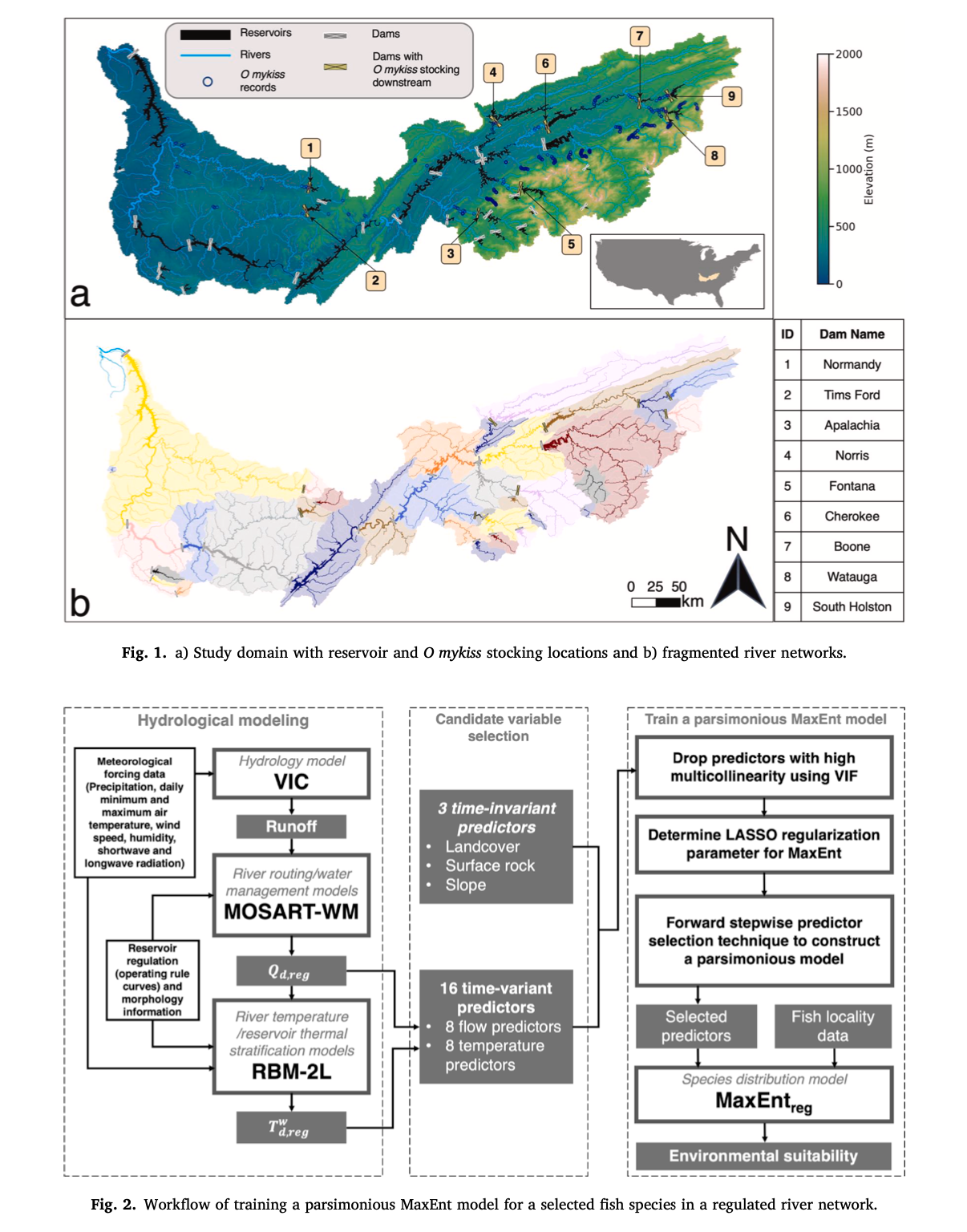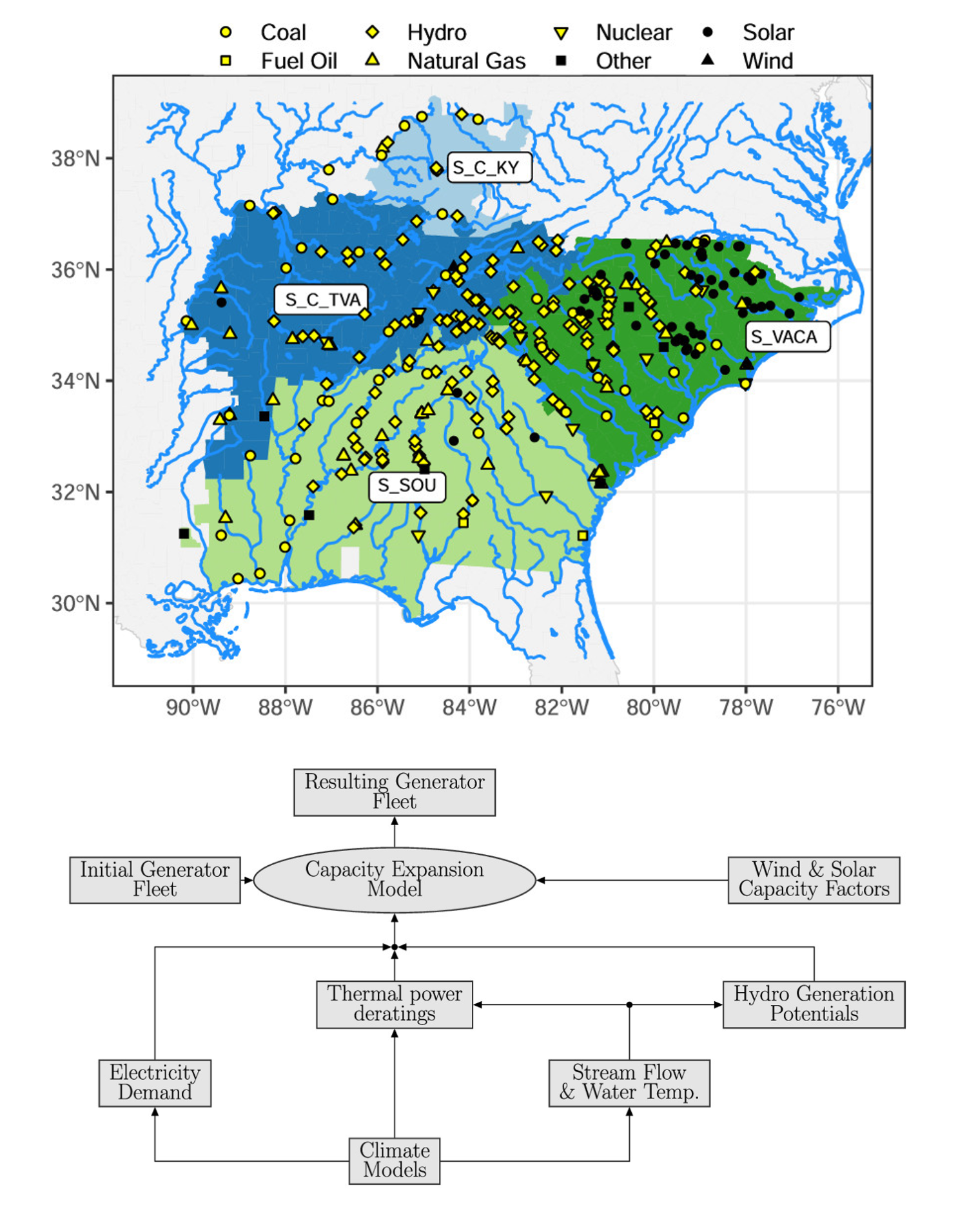Interdisciplinary exploration of integrating large-scale hydrological modeling to power system and ecosystem modeling

Capturing the ecological effects of climate-induced shifts in hydrologic and thermal regimes in regulated river systems remains a challenge in regional-scale studies. In this study, we used a well-established species distribution model to analyze the results of a process-based hydrologic modeling approach that accounts explicitly for regulation impacts on river flow and temperatures. We also accounted for the stream network fragmentation resulting from dam blockage. This combined model framework can be used to predict historical environmental suitability of river reaches for specific fish species and estimate changes in suitability in response to changes in climate and reservoir operations.
Cheng, Y., B. Nijssen, G. Holtgrieve, and J. Olden, 2022: Modeling the freshwater ecological response to changes in flow and thermal regimes influenced by reservoir dynamics. Journal of Hydrology, doi:10.1016/j.jhydrol.2022.127591.

The electric power sector in the United States faces many challenges related to climate change. On the demand side, climate change could shift demand patterns due to increased air temperatures. On the supply side, climate change could lead to deratings of thermal units due to changes in air temperature, water temperature, and water availability. Therefore, I led the simulation of river flow and temperature for both historical and future periods, which was offline integrated into a multimodel framework to analyze how compounding risks of climate-change impacts on demand and supply affect long-term planning decisions in the power system.
Fonseca, F., M. Craig, P. Jaramillo, M. Bergés, E. Severnini, A. Loew, H. Zhai, Y. Cheng, B. Nijssen, N. Voisin, and J. Yearsley, 2021: Effects of Climate Change on Capacity Expansion Decisions of an Electricity Generation Fleet in the Southeast U.S. Environmental Science and Technology, doi:10.1021/acs.est.0c06547.